
Canonization is the declaration of a deceased person as an officially recognized saint, specifically, the official act of a Christian communion declaring a person worthy of public veneration and entering their name in the canon catalogue of saints, or authorized list of that communion's recognized saints.

Caterina di Jacopo di Benincasa, TOSD, known as Catherine of Siena, was an Italian Catholic mystic and pious laywoman who engaged in papal and Italian politics through extensive letter-writing and advocacy. Canonized in 1461, she is revered as a saint and as a Doctor of the Church due to her extensive theological authorship. She is also considered to have influenced Italian literature.

Pope Clement XIV, born Giovanni Vincenzo Antonio Ganganelli, was head of the Catholic Church and ruler of the Papal States from 19 May 1769 to his death in September 1774. At the time of his election, he was the only Franciscan friar in the College of Cardinals, having been a member of OFM Conventual. He is the most recent pope to take the pontifical name of "Clement" upon his election.

Margareta Ebner was a German professed religious from the Dominican Nuns. Ebner – from 1311 – experienced a series of spiritual visions in which Jesus Christ gave her messages which she recorded in letters and a journal at the behest of her spiritual director; she was ill for well over a decade as she experienced these visions. The backdrop of much of Ebner's religious life was the bitter fighting between Pope John XXII and Holy Roman Emperor Louis the Bavarian, in which she and her convent faithfully backed Louis.

Ludovica Albertoni was an Italian Roman Catholic noblewoman from the Renaissance period and a professed member of the Third Order of Saint Francis. The death of her husband prompted her to dedicate her life to the service of the poor in Rome and she was also known for her ecstatic experiences.
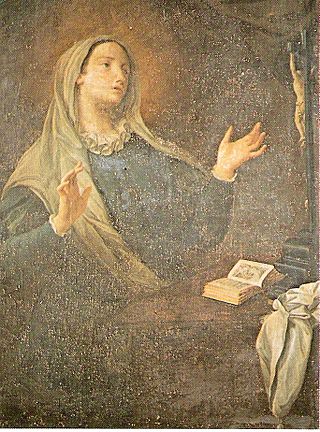
Catherine of Genoa was an Italian Catholic saint and mystic, admired for her work among the sick and the poor and remembered because of various writings describing both these actions and her mystical experiences. She was a member of the noble Fieschi family, and spent most of her life and her means serving the sick, especially during the plague which ravaged Genoa in 1497 and 1501. She died in that city in 1510.
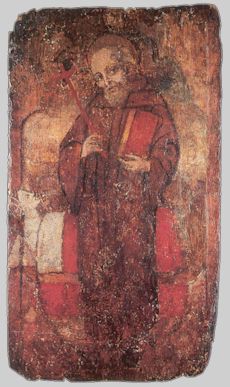
Silvestro Guzzolini was an Italian Catholic priest and the founder of the Silvestrini. He served as a canon in Osimo but respectful rebukes of his bishop's inappropriate conduct led him to leave for a hermitage before the bishop could strip him of his position. He remained in his hermitage with a determination to found a religious congregation and based it upon the Order of Saint Benedict after having a dream of Benedict of Nursia. His order received papal approval from Pope Innocent IV which allowed his order to expand across Italian cities to a significant degree.
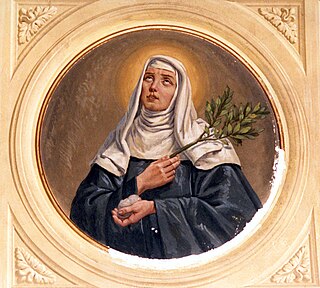
Veronica of Milan was an Italian nun in the Augustinian Order. She was reputed to have received frequent visions of the Virgin Mary, and her local cultus was confirmed by Pope Leo X in 1517.

The Mariology of the popes is the theological study of the influence that the popes have had on the development, formulation and transformation of the Roman Catholic Church's doctrines and devotions relating to the Blessed Virgin Mary.
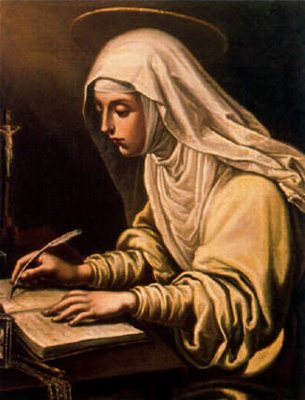
Catherine de' Ricci, OP, was an Italian Catholic nun in the Third Order of St. Dominic. She is believed to have had miraculous visions and corporeal encounters with Jesus Christ. She is also said to have spontaneously bled with the wounds of the crucified Christ. She is venerated for her mystic visions and is venerated as a saint by the Catholic Church.
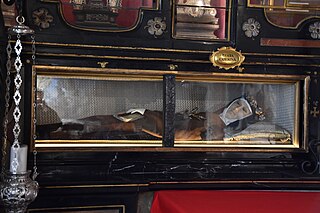
Caterina Moriggi was an Italian Roman Catholic who became a professed religious and adhered to the teachings and traditions of Augustine of Hippo. She lived in contemplation in the Italian mountains before establishing a new order, dubbed Order of Saint Ambrose ad Nemus which followed the Augustinian rule. Moriggi became known as Catherine of Pallanza when she became a religious and was noted for her austere model of living and for her deep personal holiness.

Sant'Agostino is a Roman Catholic church, originally founded in the 13th-century but refurbished in the following centuries, located on Corso XI Settembre in the historic center of Pesaro, region of Marche, Italy.

Robert de Turlande was a French Roman Catholic priest and professed member of the Order of Saint Benedict. He was of noble stock and was also related to Saint Gerald of Aurillac. He is best known for the establishment of the Benedictine convent of La Chaise-Dieu and for his total commitment to the poor.
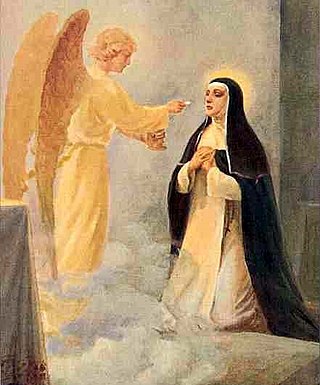
Emilia Bicchieri, OP was an Italian Catholic nun of the Dominican Order. Born to a patrician, she is best known for founding a convent in her hometown of Vercelli, where she served as prioress.

Paola Gambara Costa was an Italian Roman Catholic professed member of the Third Order of Saint Francis. She was born to nobles and married in 1475 to the nobleman Lodovico Antonio Costa - and had one child - who soon acquired a mistress and chastised her for her generous nature towards the poor and ill. Her husband later repented and died leaving her widowed and she died not long after this.

Gregorio Celli was an Italian priest of the Roman Catholic Church and a professed member of the Order of Saint Augustine. Celli lived with the latter order in Rimini until he decided to spend the remainder of his life in deep contemplation and so moved to the region's hills where he dwelled in a cave near the Franciscans stationed there. It is claimed he was expelled from his order and became a Franciscan though there is no evidence to support this claim.
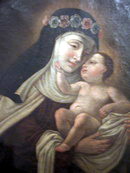
Giovanna Scopelli, O.Carm was an Italian Carmelite nun who established her own convent. Scopelli was forbidden to enter the third order branch of the order during her adolescence and waited until her parents died to embrace the religious life.
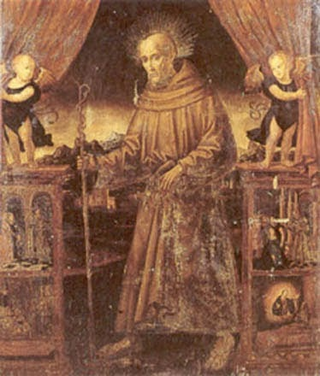
Gerardo Cagnoli was an Italian Roman Catholic and professed religious from the Order of Friars Minor. He embarked on a long pilgrimage south where he passed through Rome and Naples before settling in Trapani and then on the slopes of Mount Etna for a long hermitage. He later entered the Franciscans and served in two of their Sicilian convents where he was known for having caused miracles in addition to his humble and simple childlike nature which people believed was one of the signs of his holiness.
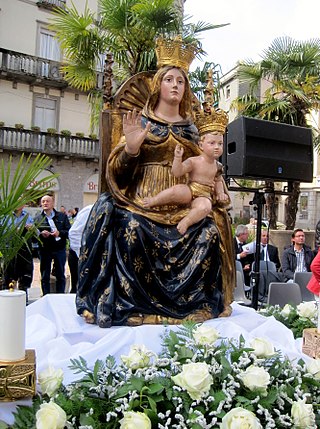
The Our Lady of Help is a statue located in Busto Arsizio. It is in the church of Santa Maria di Piazza, Busto Arsizio and it is attributed to Fabrizio De Magistris, designed in 1602, after the Madonna appeared during a plague outbreak in 1576.



















